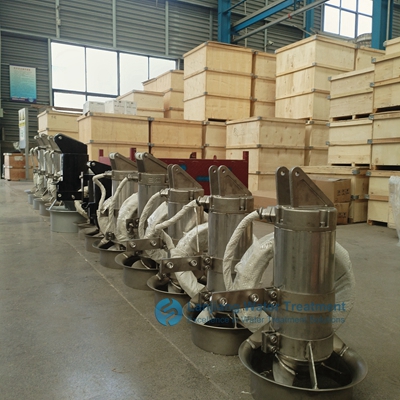Controlling the operating load of the sewage mixer is the key to ensure the normal operation of the equipment, prolong the service life and ensure the operation safety. Here are some specific control methods:

First, choose the appropriate motor
It is very important to choose the motor suitable for the working conditions of the sewage mixer. The rated power and rated current of the motor should match the needs of the equipment. Avoid choosing a motor with too little power or too high voltage, which can prevent too much current and thus control the operating load.
Second, control equipment load
1. Adjust the feeding amount: according to the design capacity and actual processing needs of the mixer, reasonable control of the feeding amount to avoid excessive material caused by equipment overload.
2. Control the water amount: During the mixing process, adding the right amount of water can reduce the viscosity of the material, thereby reducing the load of the mixer.
3. Adjust the speed: according to the nature of the mixing material and process requirements, choose the appropriate speed. Too high speed will increase the load of the equipment, while too low speed may affect the mixing effect.
Third, monitor the current size
By monitoring the current of the mixer in real time, the load state of the equipment can be understood. Once it is found that the current exceeds the rated value, measures should be taken immediately, such as reducing the speed, reducing the amount of feed, etc., to reduce the load and prevent equipment overload.
Fourth, regular maintenance
Regular maintenance of the sewage mixer, including equipment cleaning, lubrication parts, inspection and replacement of worn parts, etc. This ensures that the equipment is in good working condition, improves operating efficiency, and reduces the increased load due to equipment wear.
Fifth, operator training
Conduct professional training for operators to familiarize them with equipment performance, operation specifications and emergency handling measures. In this way, problems can be detected and handled in a timely manner during the running of the device, avoiding device overload caused by improper operations.
In summary, by selecting the appropriate motor, controlling the load of the equipment, monitoring the current size, regular maintenance and strengthening the training of the operator and other measures, the operating load of the sewage mixer can be effectively controlled to ensure the stable operation of the equipment and extend the service life.
Post time:2024-06-24